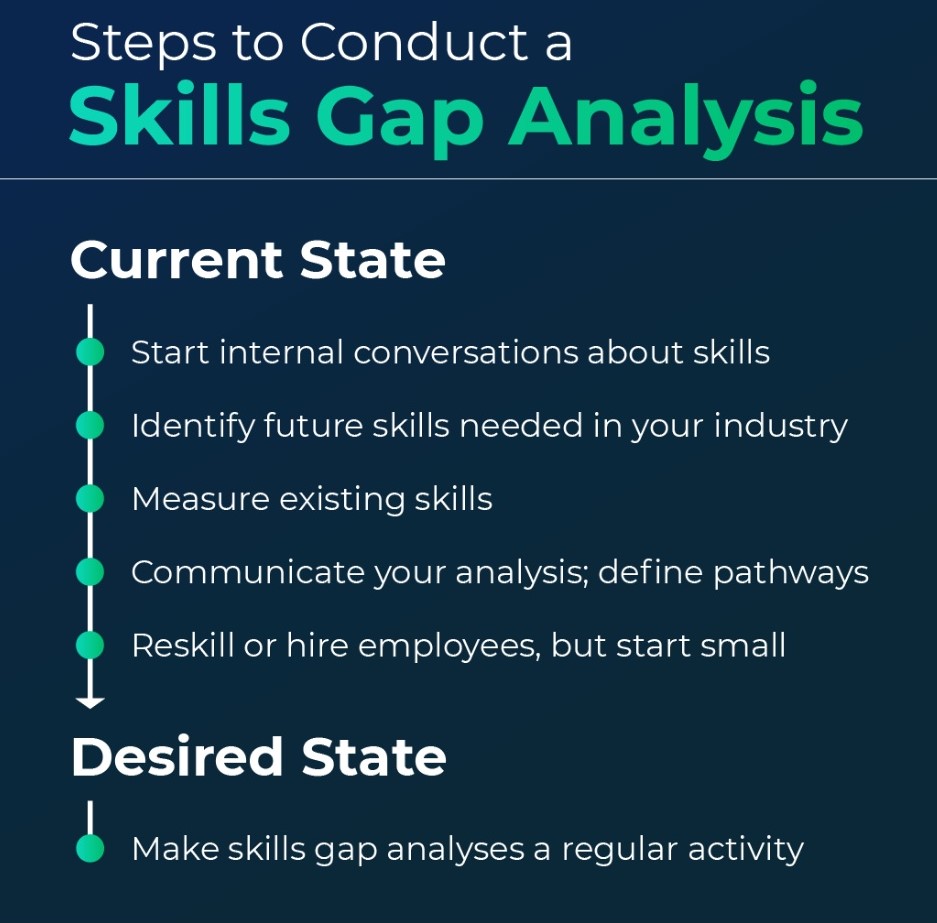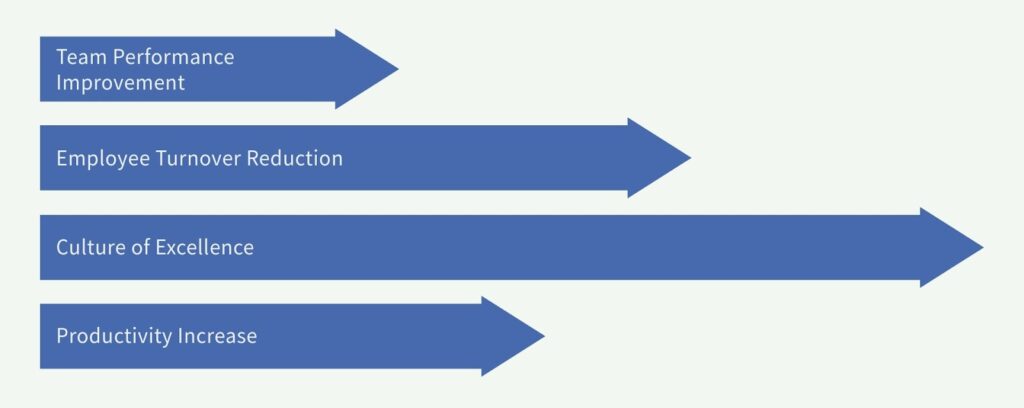In today’s rapidly evolving tech landscape, businesses are facing an unprecedented challenge: bridging the talent gap. With technology advancing at lightning speed, the demand for skilled professionals has outpaced the supply, leading to significant talent shortages across various roles. This article will delve into the concept of the talent gap, how skills gap analysis is reshaping workforce strategies in the tech sector, and the role of talent density in driving long-term success. We’ll also explore actionable strategies for corporate HR departments to close this gap through targeted hiring, training, and upskilling initiatives.
What Is the Talent Gap in the Tech Sector?

The talent gap refers to the difference between the skills employers need and the skills available in the workforce. In the tech sector, this gap is becoming increasingly evident as organizations struggle to find qualified professionals in fields such as data science, cybersecurity, software development, and AI.
What Is the Current State of the Tech Talent Gap?
The tech talent gap is not just a minor inconvenience; it’s a major business challenge that directly affects growth, innovation, and competitiveness. According to recent skills gap statistics, nearly 50% of employers report difficulty filling roles that require technical expertise. For example:
- Cybersecurity: Over 3.5 million cybersecurity jobs remain unfilled globally, despite the increasing frequency of cyberattacks.
- Data Science: The demand for data scientists has grown exponentially, yet businesses struggle to find candidates with advanced analytical skills.
- AI and Machine Learning: Companies often face long recruitment cycles due to a shortage of AI and ML specialists.
These statistics underscore the need for a strategic approach to addressing the talent gap in tech. To do this, HR departments must rely on skills gap analysis to assess current workforce capabilities and identify areas for improvement.

How Does Skills Gap Analysis Benefit Organizations?
Skills gap analysis is a systematic process used by organizations to identify the gap between the skills required for a particular role and the skills currently available within the workforce. It involves evaluating the existing skills of employees, identifying missing or underdeveloped skills, and developing strategies to close these gaps through hiring, training, or upskilling.

Why is Skills Gap Analysis Important in the Tech Sector?
- Identifying Critical Skill Shortages
Skills gap analysis enables HR departments to determine which skills are lacking, ensuring that recruitment efforts are focused on finding the right talent.
- Strategic Workforce Planning
With a clear understanding of existing skills and skill shortages, organizations can plan for future needs, aligning their talent strategy with long-term business goals.
- Maximizing Talent Density
Talent density, defined as the concentration of high-performing individuals in an organization, is crucial for tech companies. By understanding skills gaps, HR can focus on enhancing talent density through strategic hires and internal development.
- Improving Employee Retention and Development
Skills gap analysis not only helps with external recruitment but also aids in identifying internal training needs. By investing in employee development, organizations can improve retention rates and create a more capable and engaged workforce.
How to Conduct an Effective Skills Gap Analysis?
To effectively bridge the talent gap in tech, organizations must conduct a comprehensive skills gap analysis. Here’s a step-by-step guide:
1. Define Key Roles and Skills
Start by defining the critical roles in your organization and the specific skills required for each role. In the tech sector, this could include programming languages, data analysis tools, or cybersecurity protocols.
2. Assess Current Workforce Skills
Evaluate the existing skills of your employees through self-assessments, performance reviews, and skills tests. This will provide a baseline for understanding where the gaps are.
3. Identify Skills Gaps
Compare the required skills with the current skills available within your team. This comparison will highlight specific areas where your organization lacks expertise, such as data analytics or cloud computing.
4. Develop a Skills Matrix
Create a skills matrix that outlines the competencies of each team member and identifies areas for development. This tool can help HR departments visualize the distribution of skills and prioritize areas for training or hiring.
5. Create a Plan to Address Gaps
Develop a strategic plan to close identified gaps, whether through targeted hiring, training programs, or upskilling initiatives. This plan should be aligned with your organization’s long-term goals and the evolving demands of the tech industry.
How Does Talent Density Influence Workforce Strategies?

Talent density plays a significant role in addressing the talent gap in the tech sector. The concept is based on the idea that having a higher concentration of skilled and high-performing employees leads to better team dynamics, innovation, and productivity. A strong focus on talent density can reshape workforce strategies in several ways:
- Enhanced Team Performance
Teams with a higher concentration of skilled professionals tend to achieve better outcomes. By increasing talent density, organizations can ensure that critical projects are completed efficiently and effectively.
- Reduced Employee Turnover
High talent density often leads to a more engaging work environment, where employees feel supported and challenged. This can improve job satisfaction and reduce turnover, further stabilizing the workforce.
- Fostering a Culture of Excellence
With more high-performing employees, organizations can create a culture of excellence, where skill development and knowledge sharing are prioritized.
To boost talent density, HR departments should focus on recruiting top talent while simultaneously upskilling current employees.
How to Implement Actionable Strategies to Address the Tech Talent Gap?
Bridging the tech talent gap requires a multi-faceted approach. Here are some effective strategies to close the skills gap and strengthen your tech workforce:
1. Targeted Hiring Initiatives
Use data-driven talent gap analysis to guide your recruiting strategy. This approach ensures that you are actively searching for candidates with the specific skills your organization lacks.
Leverage AI-driven recruitment tools that match candidates based on skills rather than job titles, improving the quality of hires.
2. Implement Upskilling Programs
Invest in upskilling initiatives that provide employees with opportunities to learn new skills. Offer online courses, workshops, and hands-on training sessions that focus on high-demand skills like data analytics, coding, and cybersecurity.
Partner with training providers to create custom learning paths tailored to the skills required in your organization.
3. Adopt Apprenticeships and Internships
Create apprenticeship and internship programs to build a pipeline of tech talent. These programs allow candidates to develop practical skills while working on real-world projects, bridging the gap between education and employment.
4. Build Strong University Partnerships
Collaborate with universities to shape curricula that align with industry needs. This approach ensures that graduates possess the skills required by tech employers, reducing the talent gap over the long term.
5. Use AI for Skills Mapping
AI-powered skills mapping tools can help identify skills gaps in your organization and suggest the best methods to address them. These tools can also help in creating personalized learning plans for employees, making the upskilling process more efficient.
6. Promote a Culture of Continuous Learning
Encourage a culture where continuous learning is valued and rewarded. Providing employees with time, resources, and incentives for skill development will not only bridge the talent gap but also contribute to higher talent density.
Real-World Examples of Closing the Tech Talent Gap
Several tech companies have successfully closed the talent gap through strategic skills gap analysis and proactive workforce planning:
- IBM: IBM launched the “New Collar” initiative, focusing on skills-based hiring rather than traditional degrees. This approach allowed IBM to fill tech roles faster by targeting candidates with the right skills, regardless of their educational background.
- Microsoft: Microsoft invests heavily in employee upskilling through programs like Microsoft Learn, which offers training in AI, cloud computing, and data analytics. This has helped Microsoft maintain a highly skilled workforce despite the evolving demands of the tech sector.
- Google: Google’s Grow with Google initiative aims to upskill employees and the broader community in areas like coding, digital marketing, and data analysis. By focusing on internal development, Google has been able to address critical skills gaps and maintain high talent density.
Conclusion
The tech talent gap is a pressing challenge for organizations aiming to remain competitive and innovative. By conducting effective skills gap analysis, corporate HR departments can identify critical skill shortages, increase talent density, and develop targeted strategies to close the talent gap. From implementing upskilling programs to fostering partnerships with educational institutions, HR leaders can reshape workforce strategies to align with the rapidly evolving tech landscape.
As the tech sector continues to grow, organizations that prioritize closing the skills gap will be better positioned for long-term success. Start bridging the talent gap today with strategic hiring, training, and upskilling initiatives that ensure your workforce remains agile, skilled, and ready for the future. Sign up with Jobspikr to access real-time job market data and strengthen your talent strategy effectively.



